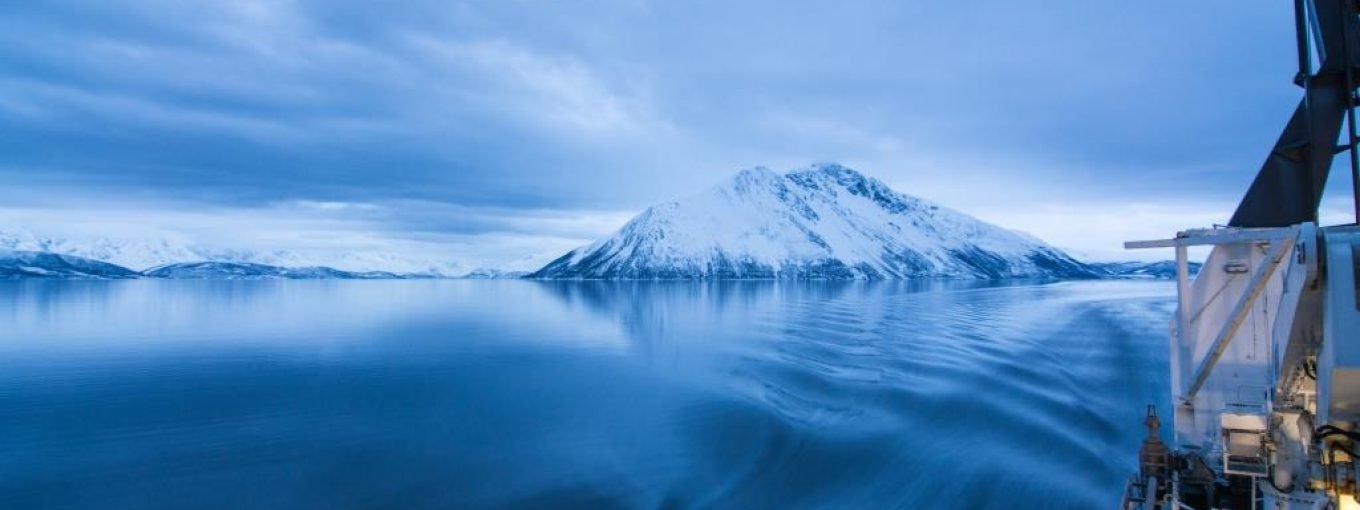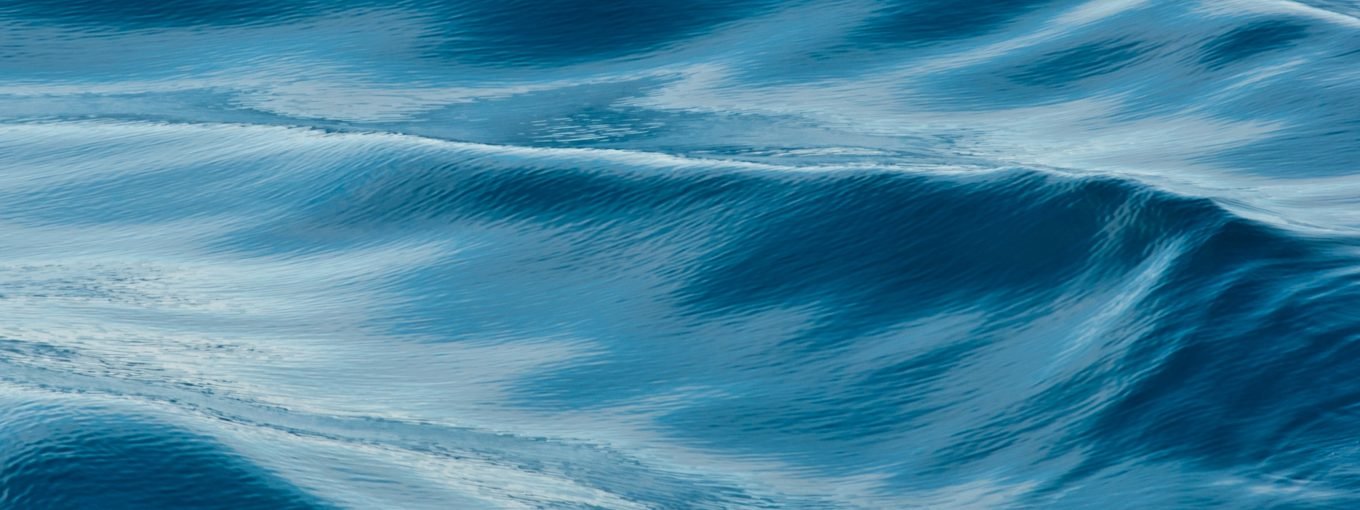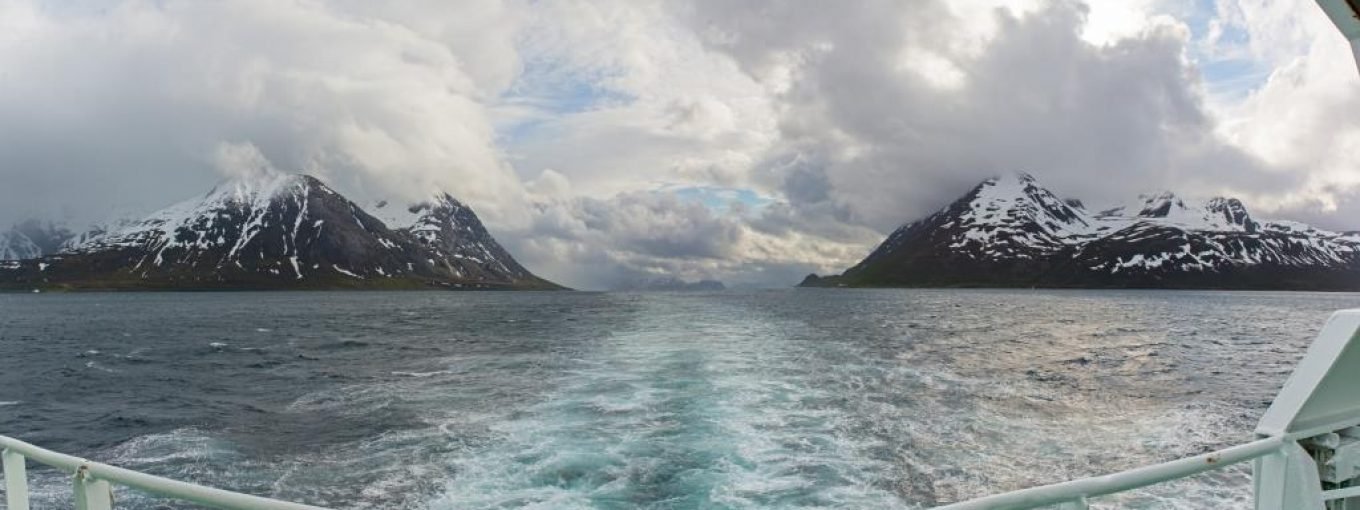The Arctic Ocean is responding to global climate change in ways that are not yet fully understood or, in some cases, not yet identified. The impacts of change in the Arctic are global in range and international in importance. For this reason, the NERC Changing Arctic Ocean Programme aims to develop a fundamental and quantified understanding of these changes.
The overarching aim of the CAO Programme is to understand how change in the physical environment (ice and ocean) will affect the large-scale ecosystem structure and biogeochemical functioning of the Arctic Ocean. This will contribute to modelling future impacts and to providing projections for future ecosystem services.
To achieve this, the Programme has two key research challenges:
Challenge 1: To develop quantified understanding of the structure and functioning of Arctic ecosystems.
To generate projections of the impacts of change requires quantitative and experimental analyses of the key processes that affect the distribution of Arctic organisms, structure of food webs and interactions with biogeochemical cycles.
1.1 Characterization of food webs and biogeochemical cycles in contrasting regions of ice cover
There are major structural differences in Arctic food webs that reflect the relative abundance of high Arctic ice-associated organisms compared to sub-Arctic/boreal species and changes in sea-ice are expected to have a major impact on species distributions and ecosystem structure. Differences in productivity and zooplankton community composition associated with the influence of Arctic ice-covered waters are known to affect which species of fish, seabirds and marine mammals can be maintained in regional food webs.
Sea-ice is also a critical habitat for a wide range of species as an area of feeding and as a substrate. Loss of sea-ice can affect access to prey and hence the breeding biology of seabirds that occur in large land-based colonies and habitat availability for marine mammals, such as seals, which haul out onto the ice using it as a resting area and refuge. However, the composition and interactions within Arctic food webs are poorly described in most regions and particularly in areas of ice to open water transit.
The sea-ice environment influences the water column structure, light field, carbonate chemistry and nutrient supply experienced by plankton, as well as the potential for air-sea exchange of biogenic gases. Ice melt, snow melt and rainfall play key roles in controlling phytoplankton community structure of under-ice and ice edge blooms, impacting biogeochemical cycling in the water column.
Vertical mixing, overturning, upwelling and oceanic transport are all intimately related to the presence and seasonality of the ice, yet there are major gaps in our understanding of how the sea-ice environment impacts food web structure, processes of energy and flows of carbon, nitrogen and phosphorus (including feeding interactions at all trophic levels and pelagic-benthic ecological links).
There is also little quantification of these links and interactions or the functional roles of species and levels of redundancy in food webs. Food web structure influences the magnitude of primary production, respiration, vertical export and ultimately sequestration of carbon. Hence, a major effort is required to fill gaps in knowledge of food web structure (microbial to seabirds and marine mammals) and functioning in a range of ice-ocean ecosystems that provide the basis for modelling the impacts of change.
1.2 Description of changing seasonality and its subsequent impact on biological and biogeochemical processes and ecosystems
As the extent of sea-ice cover declines, the seasonal dynamics of regional Arctic ecosystems is changing. In many areas there is an earlier melt and later freeze with potentially multiple-freeze-melt events during a season. As the open water period extends, this increases the growing season of planktonic organisms and can change the balance of autotrophic and heterotrophic production. This will affect the transfer of energy to higher trophic levels and flux of carbon into the deeper ocean.
The ice edge position and its timing will also affect vertical fluxes affecting pelagic-benthic links and hence benthic community structure. There is extensive knowledge of summer open-ocean processes and there have been some important international efforts to understanding winter time dark processes in high Arctic marine ecosystems (e.g. Mare Incognitum Program of the University of Tromsø), spring plankton dynamics and how winter processes impact the nutrient inventory of the Arctic Ocean with knock-on effects for spring and summer dynamics.
There are still significant and important knowledge gaps in our understanding of the transitional seasonal dynamics. The marked seasonality and strong advective regime also requires an understanding of the sensitivity of the seasonal development and spatial connectivity of food web processes.
Developing an understanding of the complete seasonal biogeochemical and ecosystem dynamics over a range of different ice conditions through a combination of observations, experiments and modelling is crucial to provide a mechanistic understanding of major underlying processes necessary for generating projections of the potential impacts of future change.
Challenge 2: To understand the sensitivity of Arctic ecosystem structure, functioning and services to multiple stressors and the development of projections of the impacts of change.
Although sea -ice is the characteristic feature of Arctic ecosystems, changes are also occurring in other fundamental drivers of habitats in these regions. This includes aspects of ocean physics (temperature, stratification and circulation), chemistry (pH and nutrients), light levels, and toxic contaminants such as persistent chemicals and mercury.
The behaviour of long-lived contaminants with changing ice-regimes and exposure of organisms living in ice during ice formation and melt are currently unknown but may contribute to contaminant residues in biota within Arctic marine ecosystems.
Development of projections requires quantified understanding of the biogeochemical and biological processes that determine the relative success of different species, and their sensitivity and resilience, and that of the food webs in which they occur, to changes in multiple drivers.
2.1 Assessment of the impact of changing inorganic and organic nutrient supply on ecosystem structure and function
Changes in ice formation, consolidation and subsequent melt, glacial melt, freshwater input, shelf exchange and mixing rates are expected to change the concentrations and elemental stoichiometry (C:N:P:Si:Fe) of inorganic and organic material in the Arctic Ocean. This will lead to unknown impacts on plankton autotrophic and heterotrophic community structure and therefore the balance between carbon storage and production of CO2.
River discharge to the Arctic is disproportionately high; 10% of the global total enters 1% of the ocean volume annually. Around 60% of Arctic dissolved organic matter (DOM) is terrestrial in origin, and there is increasing evidence that these inputs are extremely labile and thus may be an important resource for Arctic microbial communities with potential implications for food webs and CO2 production. The annual delivery of riverine DOM is expected to increase with increasing river discharge. Increased DOM supply is also envisaged via increased coastal upwelling and potentially through changes to phytoplankton community structure and thus excretion rates. As much of this DOM is strongly light absorbing there are additional implications for ecosystem structure via modification of the surface water light field, as well as a wider biogeochemical aspect related to production and fate of photo-products including climate-active gases.
The freshening of Arctic surface waters from increased river discharge and sea-ice melt leading to strengthened stratification and shoaled mixed layer depths has already led to a decrease in phytoplankton community size structure. The expected changes in microbial community structure due to changes in the concentration and composition of organic and inorganic nutrients will alter the pathways of nutrient regeneration, respiration and photochemical transformation and sinking fluxes of particulate and dissolved material in currently unknown ways. This in turn will impact mesopelagic food webs, carbon sequestration, benthic food supply, and the supply of nutrients back to the surface layer. Addressing these important changes will require process studies that focus on external supply and internal cycling of carbon, nitrogen and phosphorus, and the interactions between particulate and dissolved material and mesopelagic food webs from microorganisms to fish.
2.2 Sensitivities to multiple stressors and development of models of the life-cycles of key species, food-webs, biogeochemical cycles and whole ecosystems
To understand the responses and the resilience of species and food webs in Arctic ecosystems exposed to multiple drivers of change requires detailed understanding of the responses, adaptations (genetic, physiological, behavioural and ecological) and resilience of individual species throughout their life histories.
Arctic ecosystems are dominated by species with complex life histories that are long-lived and highly adapted to the strongly seasonal environments. Many of these species are likely to be sensitive to change and their future distribution and abundance will depend on their genetic and physiological capacities to adapt or behavioural and life cycle processes that allow them to move.
The timing of key life history events and the potential mismatch between phenology and physical cycles could have major impacts to ecosystem function. Lipid-based efficient foodwebs adapted to the near freezing environment are more vulnerable to environmental change than their mid-latitude analogues.
The advective nature of the Arctic and long life spans of the key species result in a strong connectivity of the basins and ecosystems, and fast downstream propagation of localised changes to the food webs.
Changes in any one of the above web-forming factors will lead to a major change in the food web and ecosystem structure and function. Understanding the spatial and temporal operation of these life cycles (across multiple trophic levels including plankton, fish, seabirds and marine mammals) will be crucial for developing projections of the impacts of change.
Multiple drivers of change will impact biogeochemical processes. The combined and interacting effects of increasing temperature, changing light, carbonate chemistry, organic and inorganic nutrients and metals will likely have differential impacts at different levels of ecological organisation affecting productivity and ecosystem structure, carbon storage and hence the role of these ecosystems in climate-related processes Arctic and sub-Arctic food webs support globally significant fisheries, which have expanded over the last decade.
Changes in sea ice and oceanic conditions are resulting in shifts in the distributions of exploited species and an increased influence of lower latitude species in Arctic food webs is expected to increase the accessibility and availability of fishable populations in higher Arctic regions. Such fisheries directly affect exploited species, but they also indirectly affect the species (e.g. seabirds and marine mammals) that depend on the same resources as prey.
To generate projections of the impacts of change requires quantified understanding of the multiple processes involved in determining responses to change. This will involve process and experimental studies focused on the critical phases of life-cycles and adaptive capacities of key species, developing mechanistic understanding of the interactive effects of change on biogeochemical and biological processes and how these impact food web structure.
No single model can be used to address all the issues of interest, instead a range of models will be required that focus on different scales of biological organisation, such as the life-cycles of key species, food webs and whole ecosystem processes, including biogeochemical influences on productivity and nutrient cycling.
2.3 Projections of the impacts of change
Development of projections of the impacts of Arctic change on species, biogeochemical cycles and whole ecosystems is required for the development of mitigation and adaptation measures for managing the impacts of change on human communities and economic systems.
Projections of the impacts of physical and biogeochemical changes in Arctic systems are being developed through IPCC processes. The UK Earth System Model (ESM) based on NEMO-MEDUSA will provide a series of circumpolar scenarios of physical and biogeochemical change over the next century. These studies can provide the basis for developing projections of the impacts of change on key species and food webs.
The generation of such projections will be a major contribution to the development of the International Platform on Biodiversity & Ecosystem Services (IPBES) process assessing the impacts of future change on biodiversity and ecosystem services.
Analyses are required that examine resilience, sensitivity and thresholds of biogeochemical cycles, species and ecosystem processes. Projections of future change will assess the sensitivity of key species to multiple drivers and examine changes in the distribution and abundance of key species, the interaction of biogeochemical and ecological processes and the structure and functioning of ecosystems under different climate change scenarios.
Development of projections should include appropriate analyses of model sensitivity and associated uncertainty. Understanding how future changes in food webs will impact key ecosystem services will be crucial for sustainable exploitation of these resources.
Activities under this challenge are expected to include analyses of how changes in Arctic ecosystems will impact, and be affected by, human activities (including fisheries, transport and resource exploitation) and develop understanding and projections of potential ecological and socio-economic impacts of change.








